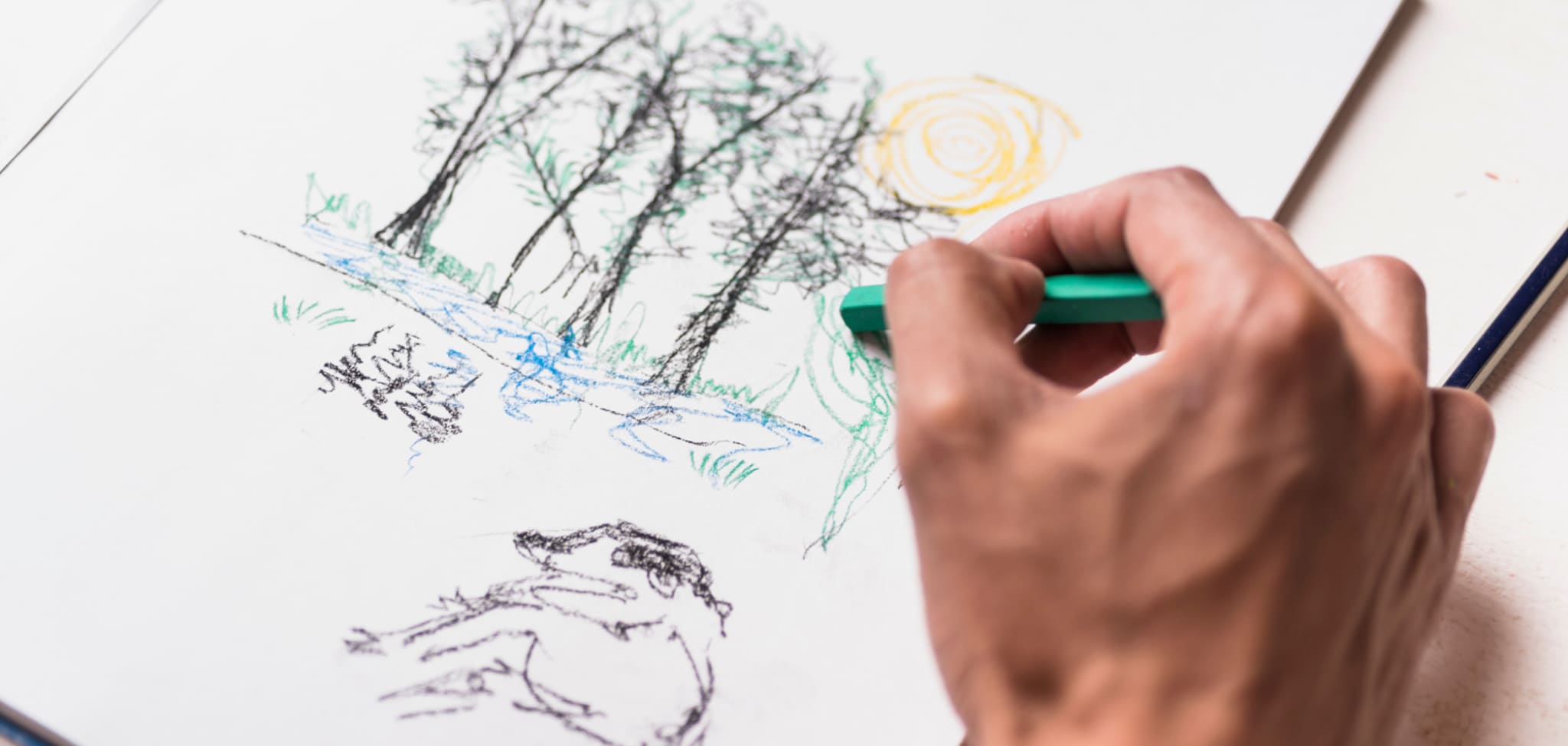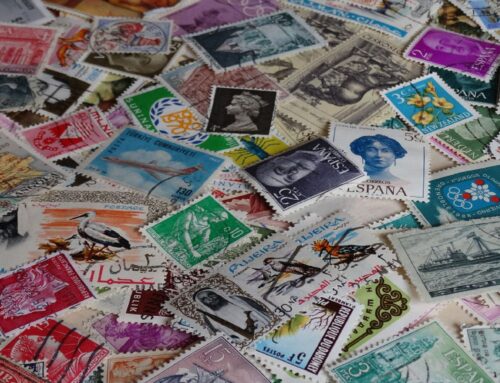Introduction to Drawing: Unleash Your Creativity and Boost Your Skills
Are you ready to embark on a creative journey? Whether you’re a beginner or an experienced artist, learning how to draw can open up a world of possibilities. Drawing is not only a way to express yourself, but it also offers numerous benefits for your mental health, personal life, and even your career. In this comprehensive guide, we’ll explore the many advantages of drawing and provide you with practical tips and techniques to help you improve your skills. So, grab your pencils, find a comfortable spot, and let’s dive into the wonderful world of drawing.
The Benefits of Learning to Draw
Drawing is more than just putting pencil to paper. It has the power to enhance your mental well-being, bring joy to your life, and improve your work performance. Let’s take a closer look at some of the incredible benefits of learning to draw.
1. Drawing for Mindfulness and Stress Relief
Art has long been recognized as a powerful tool for stress reduction. Engaging in artistic activities, such as drawing, can help you enter a state of mindfulness, where you focus your attention on the present moment and let go of negative thoughts and worries. Studies have shown that making art can reduce stress levels and promote relaxation, even if you don’t consider yourself a skilled artist. When you’re immersed in the creative process, time seems to stand still as you enjoy the simple act of putting pencil to paper.
Drawing also allows you to tap into your sense of play, observation, and wonder. As children, we drew and colored with abandon, without worrying about the final outcome. Reconnecting with that childlike spirit can be liberating and help you find joy in imperfection. If you’re a perfectionist, learning to draw can teach you to accept things as they are and find beauty in imperfections.
Moreover, art therapy, which often involves drawing, has been proven to be effective in reducing anxiety and depression. By practicing mindfulness through art, you not only improve your mental well-being but also indirectly enhance your work performance. Happy employees tend to be more productive, loyal, and innovative, making drawing a valuable tool for self-care and professional growth.
2. Draw Your Story: Illustrated Journaling
Journaling is a popular stress-relieving activity where you reflect on your thoughts and experiences. But why limit yourself to words? Combining drawing with journaling can be a powerful way to express yourself and turn everyday moments into something more significant. By creating a sketch journal or notepad where you commit to illustrating something each day, you can document your life in a unique and personal way.
Illustrated journaling allows you to capture memories, thoughts, and emotions in a visual format. Over time, you’ll build a book of memories that serves as a record of what’s important to you. These visual journals can become cherished keepsakes that you can reflect on in the future and even pass down to future generations. If you’re interested in getting started with illustrated journaling, check out the course “Draw Your Life: Intro to Illustrated Journaling” by Mimi Chao.
3. Turn Drawings into Thoughtful Gifts
Are you looking for a thoughtful and personalized gift? Look no further than your own drawing skills. Many people value traditional art as keepsakes, especially portraits of loved ones, pets, or family. By creating a cartoon of your friends or family, you can give them a unique and heartfelt gift. You can even go a step further and create your own children’s book, filled with illustrations and stories that will be treasured for years to come.
If you’re confident in your drawing abilities, you can take it a step further and sell your artwork online. Platforms like Etsy and Not On The High Street make it easy for artists to showcase and sell their work, while customers can commission personalized and imaginative pieces. Learning to draw not only allows you to create meaningful memories but also gives you the opportunity to share your talent with others.
4. Bring Drawing into Various Aspects of Your Life
Drawing is not limited to the realm of art. It can be a valuable tool in various fields, including education, problem-solving, and communication. Let’s explore how drawing can benefit your career, whether you’re pursuing a creative path or not.
Drawing in Education: Sketchnoting and Active Learning
Drawing can enhance learning and understanding by making information more engaging and memorable. Sketchnoting, the practice of doodling or creating visual notes while listening to someone speak, combines drawing with keywords to summarize information in a visual way. It not only reinforces lessons but also helps you stay engaged during presentations and lectures. Sketchnoting has become a popular practice at conferences, as event organizers use visual notes to demonstrate the value of the conference and create shareable content for social media.
Drawing in Problem-Solving and Planning
When faced with a problem or a creative challenge, taking a break from your usual work routine and picking up a pen or pencil can help you think outside the box. Drawing can allow you to percolate on ideas and visually sketch out plans step by step. Whether you’re a programmer, developer, or designer, applying sketching techniques can make a significant difference in brainstorming and communication. Sketching is an essential part of the design-driven development process, as it helps you provide specifications and visualize user experiences.
Drawing in Presentations and Communication
In any office setting, drawing can be a valuable tool for presentations and communication. Creating a well-crafted flip chart or visual aid can make a lasting impression on your audience, far more than a standard PowerPoint presentation. Drawing shadows, applying different coloring techniques, and using art in your presentations can make them more intimate, adaptive, and engaging. Additionally, drawing during meetings or conversations can help you visually communicate ideas, solve problems, and foster collaboration.
Drawing in Design and Architecture
Drawing is an integral part of many design disciplines, including architecture, interior design, and product design. Concept drawing allows designers to envision projects before starting on them. Sketching out ideas, whether it’s a building, a room layout, or a product design, helps designers explore different possibilities, make quick changes, and receive client approvals. Drawing provides a faster and more efficient way to communicate design concepts and bring them to life.
5. Boost Your Creative Skills and Unlock Your Potential
Learning to draw can help you unlock your creative potential and develop valuable skills that can be applied to various aspects of your life. Drawing teaches you to observe the world more closely, pay attention to details, and think critically. It also enhances your hand-eye coordination, fine motor skills, and spatial awareness.
By consistently practicing drawing, you can improve your ability to visualize concepts, problem-solve, and think outside the box. These skills are not only valuable in the artistic realm but also in many other professions, including marketing, advertising, and entrepreneurship. Drawing trains your brain to think creatively and find innovative solutions to challenges.
Drawing for Beginners: Getting Started the Right Way
Now that you understand the incredible benefits of learning to draw, it’s time to dive into the basics. Whether you’re a complete beginner or looking to refresh your skills, these tips will set you on the right path to becoming a confident artist.
1. Start with the Right Drawing Tools
Before you begin drawing, it’s essential to have the right tools at your disposal. Don’t let the fear of “ruining” expensive sketchbooks hold you back. Start with affordable sketchbooks or notebooks, or even sticky notes that you can easily discard if you’re not satisfied with your drawing. As you progress, you can invest in higher-quality sketchbooks.
When it comes to pencils, a mixed set of drawing pencils is a good starting point. Experiment with different grades of graphite to find the ones that suit your drawing style best. Don’t forget a pencil sharpener to keep your pencils in tip-top shape.
An eraser is another essential tool. Look for a high-quality eraser that doesn’t smudge and can erase cleanly. A classic rubber eraser is a good option, but consider a kneaded eraser as well, as it can be reshaped to erase more precise areas.
Depending on your drawing preferences, you may want to explore other drawing mediums such as charcoal, ink, or watercolors. Each medium offers a unique drawing experience, so don’t be afraid to experiment and find what works best for you.
2. Get into the Habit of Drawing Regularly
Drawing is a skill that improves with practice and consistency. Instead of waiting for large chunks of time, dedicate a small amount of time each day to drawing. Whether it’s five minutes or an hour, make drawing a part of your daily routine.
Consider keeping a sketchbook to log your activities and inspirations. You can use it to practice drawing exercises, doodle during moments of inspiration, or simply jot down ideas. Your sketchbook can become a visual diary and a reflection of your progress as an artist.
If you’re struggling to come up with ideas, try sketching prompts to get started. Set a timer for 10 minutes and let your hand move freely on the paper without focusing on creating anything specific. Embrace the freedom to experiment and see what emerges. You can also draw the objects and people you see every day, allowing you to practice observation and capture the world around you.
3. Develop Fundamental Drawing Skills
To improve your drawing skills, it’s important to master the fundamentals. Start by practicing basic shapes such as circles, squares, and triangles. Draw them repeatedly until you can create them easily and accurately. Once you’re comfortable with these shapes, move on to more complex forms such as cubes and cylinders.
Shading is a fundamental skill that adds depth and dimension to your drawings. Experiment with different shading techniques, such as hatching and cross-hatching, to create light and shadow. Practice shading objects of different shapes and sizes to enhance your understanding of form and volume.
Perspective is another crucial aspect of drawing. It allows you to create the illusion of depth and distance in your artwork. Learn the principles of one-point, two-point, and three-point perspective to accurately depict three-dimensional objects.
4. Embrace Creativity and Experimentation
Remember, drawing is not just about technical skills—it’s also about expressing your creativity. Don’t be afraid to experiment, take risks, and develop your unique drawing style. Use your imagination to create imaginative and original artworks that reflect your personality.
Try different subjects and styles to broaden your artistic horizons. Explore different themes, such as landscapes, portraits, or still life, and experiment with different techniques and mediums. Embrace the process of discovery and allow yourself to make mistakes along the way. Often, the most interesting and unique artworks come from embracing imperfections and embracing the unexpected.
5. Learn from Others and Seek Feedback
Drawing is a continuous learning process, and there’s always room for growth and improvement. Take advantage of the wealth of resources available online, such as tutorials, courses, and communities. Skillshare, for example, offers a wide range of drawing classes taught by experienced artists that can help you develop specific skills and techniques.
Seek feedback from other artists and enthusiasts to gain different perspectives and insights. Join local art groups or online communities where you can share your work and receive constructive criticism. Engaging with other artists can inspire you, provide valuable learning opportunities, and help you build a supportive network.
Remember, becoming a skilled artist takes time and practice. Be patient with yourself and enjoy the journey. Every drawing you create is an opportunity to grow and improve.
Drawing Techniques and Tips to Enhance Your Skills
Now that you have a solid foundation in drawing, let’s explore some advanced techniques and tips to further enhance your skills. These techniques will help you refine your drawings and take them to the next level.
1. Explore Different Styles and Mediums
As an artist, it’s important to explore different styles and mediums to discover what resonates with you. Experiment with various drawing techniques, such as cross-hatching, stippling, or blending, to add texture and depth to your artwork.
Don’t limit yourself to pencil and paper—try using different mediums like charcoal, ink, or watercolors. Each medium offers its unique qualities and challenges, allowing you to express your creativity in new and exciting ways.
2. Study Anatomy and Proportions
If you’re interested in drawing people or animals, studying anatomy and proportions is essential. Understanding the underlying structure of the human body or animal forms will help you create more accurate and realistic drawings.
Take the time to study the proportions of different body parts and practice drawing them from various angles. Pay attention to details such as muscle definition, bone structure, and facial features. By developing a solid foundation in anatomy, you’ll be able to draw figures with greater confidence and accuracy.
3. Mastering Lighting and Shadows
Lighting and shadows play a crucial role in creating depth and dimension in your drawings. Pay attention to the direction and intensity of light sources in your reference images or real-life scenes.
Study how light interacts with different surfaces and objects, creating highlights, mid-tones, and shadows. Experiment with different shading techniques to capture the effects of light and shadow on your subjects.
4. Practice Perspective Drawing
Perspective drawing is a fundamental skill that allows you to create the illusion of three-dimensional space on a two-dimensional surface. By understanding the principles of perspective, you’ll be able to draw objects with greater accuracy and realism.
Experiment with one-point, two-point, and three-point perspective to draw objects from various angles. Learn how to create depth and distance by manipulating vanishing points, horizon lines, and converging lines.
5. Incorporate Color Theory
Color adds a whole new dimension to your drawings, evoking emotions and enhancing the visual impact. Familiarize yourself with color theory and learn how different colors interact and harmonize with each other.
Experiment with different color palettes, contrasts, and saturation levels to create mood and atmosphere in your drawings. Consider incorporating colored pencils, markers, or watercolors into your artwork to explore the vibrant world of color.
6. Develop Your Observation Skills
Observation is a critical skill for any artist. Train yourself to see the world with a keen eye for detail and nuance. Practice observing the world around you and pay attention to the intricate details, shapes, and colors.
Engage in life drawing sessions, where you draw from live models or everyday scenes. This will help you develop your observation skills and improve your ability to capture the essence of your subjects.
7. Seek Inspiration from Other Artists
Drawing is a journey of continuous learning and growth. Seek inspiration from other artists, both past and present. Study the works of master artists and contemporary illustrators to gain insights into their techniques and approaches.
Attend art exhibitions, visit museums, and explore online galleries to expose yourself to a diverse range of artistic styles and ideas. Engage with the artwork that resonates with you and try to understand the artist’s thought process and creative choices.
8. Experiment with Mixed Media
Don’t be afraid to mix different mediums and materials in your drawings. Combine pencil with ink, watercolors with charcoal, or digital techniques with traditional methods. Experimenting with mixed media can add depth, texture, and visual interest to your artwork.
Explore different surfaces to draw on, such as canvas, wood, or toned paper. Each surface offers unique characteristics that can enhance your drawings and push your creative boundaries.
9. Embrace Continuous Learning
As an artist, your journey of learning and growth never ends. Embrace the mindset of a lifelong learner and continuously seek opportunities to expand your skills and knowledge.
Take advantage of online courses, workshops, and tutorials to learn new techniques and gain insights from experienced artists. Engage in self-directed learning by exploring new subjects, experimenting with different styles, and challenging yourself with complex projects.
10. Trust Your Intuition and Enjoy the Process
Lastly, remember that drawing is a personal and creative journey. Trust your intuition and allow yourself to explore and experiment. Don’t be afraid to make mistakes or deviate from the conventional norms. Enjoy the process of creating and let your artistic voice shine through your drawings.
Conclusion: Unleash Your Creativity and Grow as an Artist
Learning to draw is an enriching and rewarding journey. It allows you to express your creativity, improve your mental well-being, and develop valuable skills that can be applied in various aspects of your life. Whether you’re a beginner or an experienced artist, there is always room to grow and explore new artistic paths.
By embracing the benefits of drawing, practicing regularly, and continuously seeking inspiration and learning opportunities, you’ll unlock your creative potential and create artwork that resonates with you and others.
So, grab your sketchbook, pick up a pencil, and let your imagination soar. The world of drawing awaits—unleash your creativity and watch yourself evolve as an artist.
Additional Resources:
- Skillshare: Explore a wide range of drawing classes taught by experienced artists.
- The Virtual Instructor: Learn the basics of drawing through step-by-step tutorials and exercises.
- EmptyEasel: Looking for art tips, or how to sell art online?
Remember, the key to becoming a skilled artist is practice, patience, and a willingness to explore and experiment. So, go forth and unleash your creativity through the wonderful art of drawing. Happy sketching!
RECENT POSTS
History of Baseball
History of Baseball: From Its Origins to Modern TimesBaseball is one of the most popular sports in the United States, with millions of fans tuning in to watch games each year. The sport has a [...]
Hunting Falconry
History of Hunting Falconry: An Overview of Falconry's Evolution and Significance Are you interested in learning about the ancient practice of hunting with trained birds of prey? Falconry has been practiced for thousands of [...]
Hunting Destinations in 2024
Hunting Destinations in 2024: Top Picks for Avid Hunters Are you looking for exciting hunting destinations to explore in 2024? Whether you're a seasoned hunter or just starting, there are plenty of options available [...]
History of hunting dogs
Explore the History and Significance of Hunting Dogs: A Comprehensive Guide If you're a hunting enthusiast, then you know the importance of having a reliable hunting dog by your side. Hunting dogs have been [...]
Hunting as a Hobby
Hunting as a Hobby: An Overview Hunting is a popular outdoor activity enjoyed by millions of people worldwide. While some hunt for food, others do it as a hobby. Hunting as a hobby can [...]










